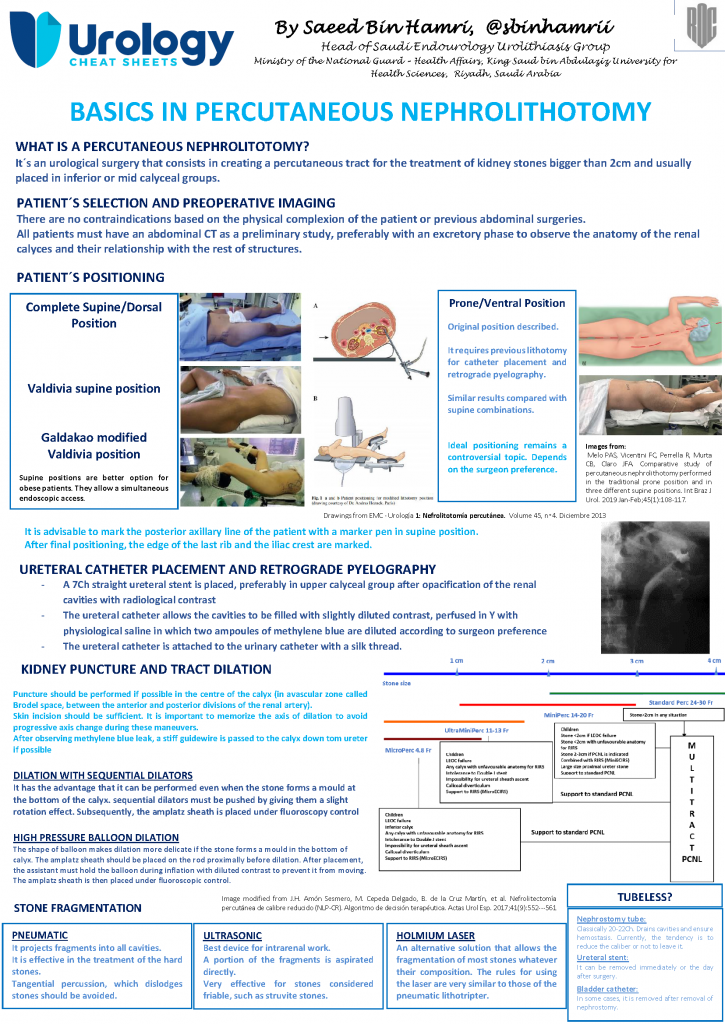Percutaneous nephrolithotomy (PCNL) is an urological procedure that consists in creating a percutaneous tract for the treatment of kidney stones bigger than 2cm and usually placed in inferior or mid calyceal groups. There are no contraindications based on the physical complexion of the patient or previous abdominal surgeries.
The classic prone position for PCNL was first described in 1976. The technique gradually became standardised and PCNL with the patient in the prone position became the generally accepted standard approach. Over the next 35 years, many other positions were described, with the patient placed prone, lateral or supine in various modifications. The modifications were intended to provide the option of a simultaneous retrograde approach during the procedure. The supine position for percutaneous access was originally described even before 1990 but became more popular after 2007 when the Galdakao modification was reported. Several other modifications of the supine position have been described, with the latest being the flank-free modified supine position, which allows the best exposure of the flank among the supine positions. Each position has its specific advantages and disadvantages.
Do you want to know more about these techniques?
Don’t miss this Urology Cheat Sheet created by Saeed Bin Hamri, Head of Saudi Endourology Urolithiasis Group!


